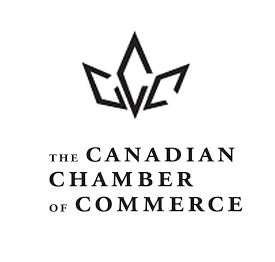
We collect basic website visitor information on this website and store it in cookies. We also utilize Google Analytics to track page view information to assist us in improving our website.
Tariffs and Trade Updates and Information, visit www.chambercheck.ca
|
|
||
|
As businesses navigate an era of rapid technological evolution, shifting workplace dynamics, and global interconnectedness, preparing your workforce for 2025 demands strategic foresight.
The key to success lies in fostering adaptability, embracing technological advancements, cultivating a culture of continuous learning, and prioritizing employee well-being.
“Whether it's the benefits program, whether it's salaries, the expectations of employees have gone up and I think also to the expectation of the business culture,” says Frank Newman, owner of Newman Human Resources Consulting. “I think people are making more and more decisions based on workplace culture.”
He says since the pandemic, the continuing trend of creating a strong workplace will become even more apparent in 2025 and beyond as potential employees look for reasons why they should work for a particular company.
Strong communication
“If a business owner can't answer positively what it's like to work there, then that’s going to be a problem,” says Frank. “As an employer, you have to look at your internal culture and determine what is it like. Are we behaving as we say we are? What are our values? And because it's still a competitive world out there, how do we differentiate ourselves?”
Ensuring your company brand is on target is key when it comes to navigating the current hiring environment, which he believes has become less civil since the pandemic in terms of the way some potential employees disrespect a company’s time, in some cases by not even showing up for a scheduled interview.
“I think as people we've got used to a little bit lower standard. So, as an organization, if you want to be the preferred employer or even the preferred partner to work with as a business partner, you need to up your game a bit because that's going to put you in good stead for the long run,” says Frank, adding sending a ‘thank you’ response to potential candidates just for applying is one way to make a positive impression.
“You want to make sure you increase your communication standards because everything is now subject to online reviews. The whole review concept is important - whether it's employee reviews or whether it's customer reviews – and to be aware and make sure you check them monthly because you don't know what people are going to say about your business.”
Safe environment needed
Good communication with employees also remains key, he says, noting in wake of the pandemic mental health issues continue to be an ongoing issue for many companies.
“The latest trend now is to make sure you have an employee assistance plan that can help with mental health and other counseling needs people have,” says Frank. “We live in an age of stress. It’s about having some tools for people to access, such as mental health professionals, or even just making sure that employees feel comfortable sharing.”
Creating a psychologically safe environment is a big part of developing a mental health strategy that works, taking into consideration the various pressures employees are under at work and at home.
Frank recommends conducting a pulse survey as a way to quickly collect feedback from employees to gauge their impressions of where the company stands at the moment. Depending on the size of your workforce, he says sitting down for a coffee and an informal chat can also be just as effective.
“It’s about keeping an ear to the ground in terms of what your employees are feeling and facing,” he says. “We don’t want tone deaf business owners; that’s not going to cut it these days and I think people are looking for more humanity from their business leaders.”
A continued trends towards hybrid work situations could also play into that sense of humanity as employers look for ways to engage with their online workforce.
“You’ve got to make sure you are finding ways to leverage that and build those connections when people are isolated at home,” says Frank, noting that many employers continue to see a surge in potential applicants when it comes to offering hybrid work. “Managers must think about that and what it does to their recruiting.”
Investing in leaders
He says trusting your employees promotes growth and productivity, and that mistrust erodes confidence.
“What companies should be thinking of now is really investing in leaders. So, it’s important to make sure your leaders are connecting with their people and being authentic,” says Frank. “Most people leave an organization not because of work, but because of the boss.”
He says trust also works in both directions, especially when it comes to companies maneuvering through the current economic and political turmoil facing businesses in North America.
“It’s really about planning ahead and also letting your employees know that you’re taking things seriously and have plans in place to deal with these issues, because sometimes they are not aware of what management is doing and that may create some uncertainty,” says Frank, noting when it comes to the future, a strong AI strategy to assist employees boost their productivity is also a key consideration. “Companies should be leveraging that as much as possible.”
How businesses can prepare their workforce for the challenges of the near future:
1. Embrace Technological Integration The workforce of 2025 will operate in a tech-driven environment. Businesses should:
2. Prioritize Employee Well-Being The pandemic highlighted the importance of mental health and well-being. A healthy workforce is a productive workforce. Companies should:
3. Focus on Reskilling and Upskilling As technology advances, certain skills will become obsolete while others gain prominence. To stay ahead:
4. Foster Agility and Innovation The ability to adapt to change and innovate will be critical in 2025. Encourage:
5. Leverage Workforce Analytics Data-driven decisions can significantly enhance workforce management. Businesses should:
6. Commit to Sustainability The workforce increasingly values companies that prioritize environmental and social responsibility. Businesses should:
|
||
|
||
|
||
|
||

|
|
Brian Rodnick 251 July 2, 2025 |

|
|
Greg Durocher 41 July 28, 2023 |

|
|
Canadian Chamber of Commerce 24 January 29, 2021 |

|
|
Cambridge Chamber 2 March 27, 2020 |